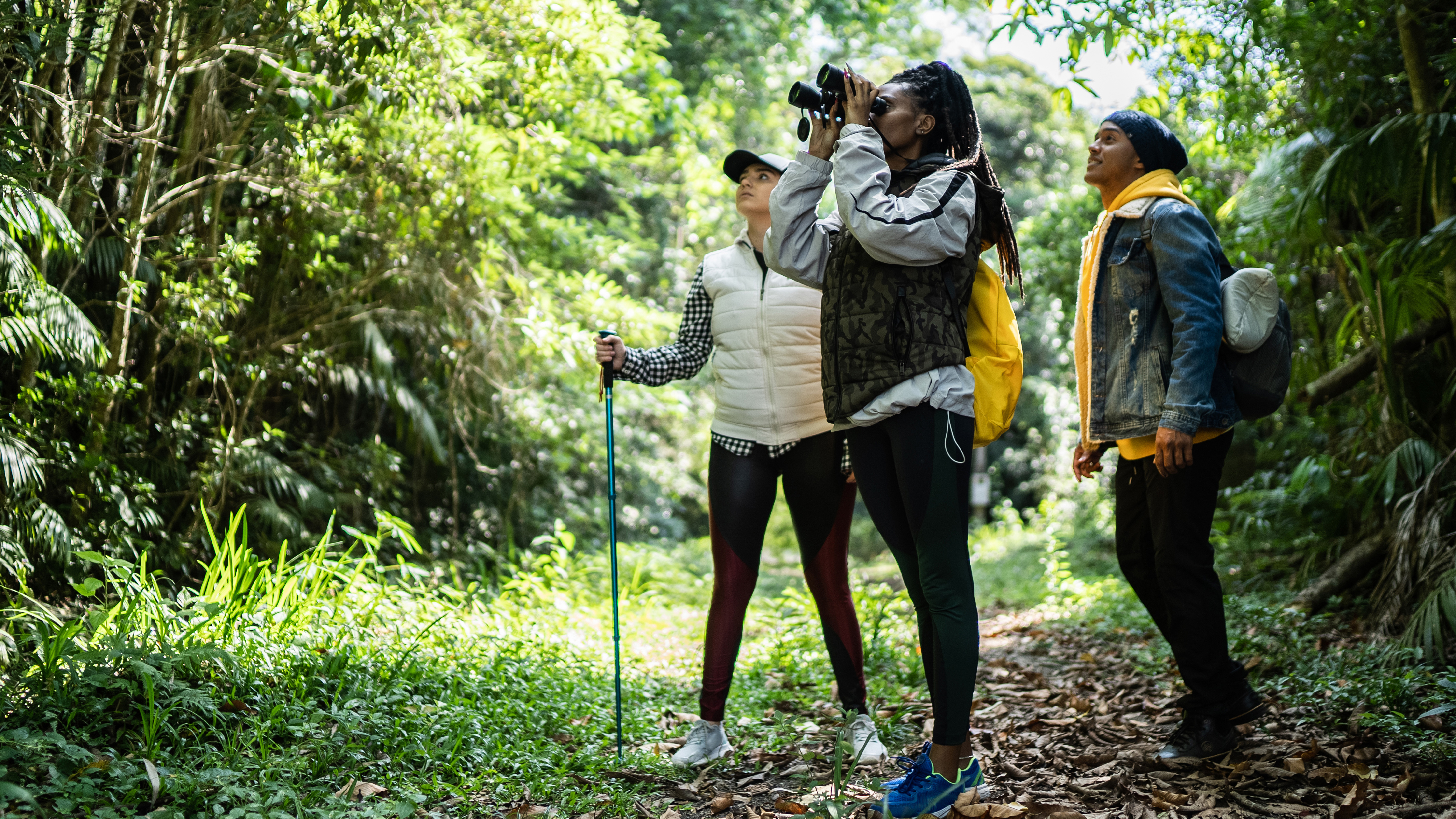
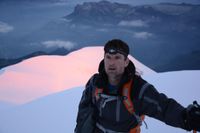
If you’re intrigued by the idea of birdwatching and fancy giving it a go, then I’ve got some really good news for you: this is an excellent time to start.
Spring and autumn – when myriad migratory species arrive and depart in large numbers, to and from all corners of the globe – tend to be the seasons that get everyone excited, from highly experienced twitchers to occasional birdwatchers. But in reality, there is just as much to observe and enjoy in summer and winter – you just need to adjust how and where you look.
Instead of staring at the skies, tracing the movements of the winged tourists during the more sedentary seasons, you need to closer at what is going on in the branches of trees and behind the rustling leaves of bushes.
In truth, though, birds don’t operate according to a rudimentary four-season human year anyway. For most species, it’s a far busier calendar than that, with multiple micro-seasons bringing little developments that affect how they go about living their lives (the hatching of certain caterpillars, for example, or the ripening of a specific berry).
Choosing the best binoculars for all-season bird watching
It’s fantastic to simply watch birds with your naked eye, but to really observe their activities up close and identify each species with some degree of certainty, you are going to need to invest in some good binoculars.
There are many models of fantastic binoculars out there, including some specifically designed for looking at the night sky with massive magnification and wide objective lenses, but what defines the best binoculars for birdwatching is a little more nuanced and depends on when and where you do most of your twitching.
If you’re mostly interested in birdwatching while you’re out and about, walking on trails, then it’s best to go for lightweight binoculars that are easy to carry, with a lower level of magnification (7x or 8x) – such as the Bushnell Engage EDXs or Nikon Prostaff 3s – so you can easily find and focus on your moving target.
Get all the latest news, reviews, deals and buying guides on gorgeous tech, home and active products from the T3 experts
If you’re intending to visit bird hides, however, where avian communities including waterfowl can be reliably seen at quite close quarters and you’re staying in one place while you watch them, then binoculars with a slightly higher magnification (10x) might suit your needs best – like the rugged Vortex Crossfire HD 10x50s, which even comes complete with a chest harness.
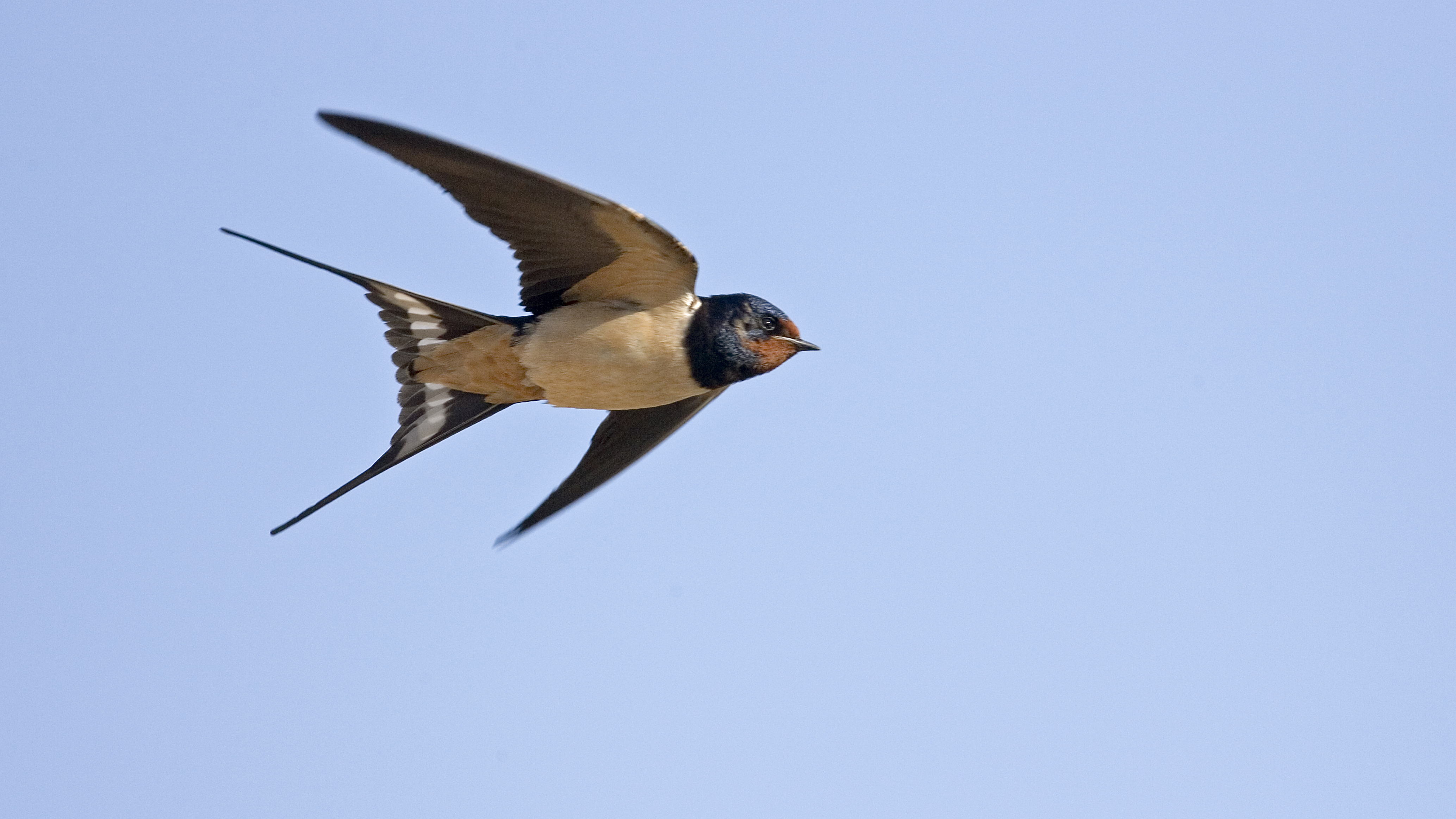
Summer loving
After the arrival of the swifts, swallows, blackcaps, nightingales, cuckoos, wheatears, multiple martins, and many more fair-weather migrants comes the melodic noisiness of spring, when male birds sing their little hearts out while attempting to attract a mate. And then there’s the violent flurry of action that happens as nests are carefully constructed and territories are robustly defended.
In early summer, most species of birds remain extremely active because they have young mouths to feed relentlessly and fledglings to train up, so members of the next generation can look after themselves once they leave the nest.
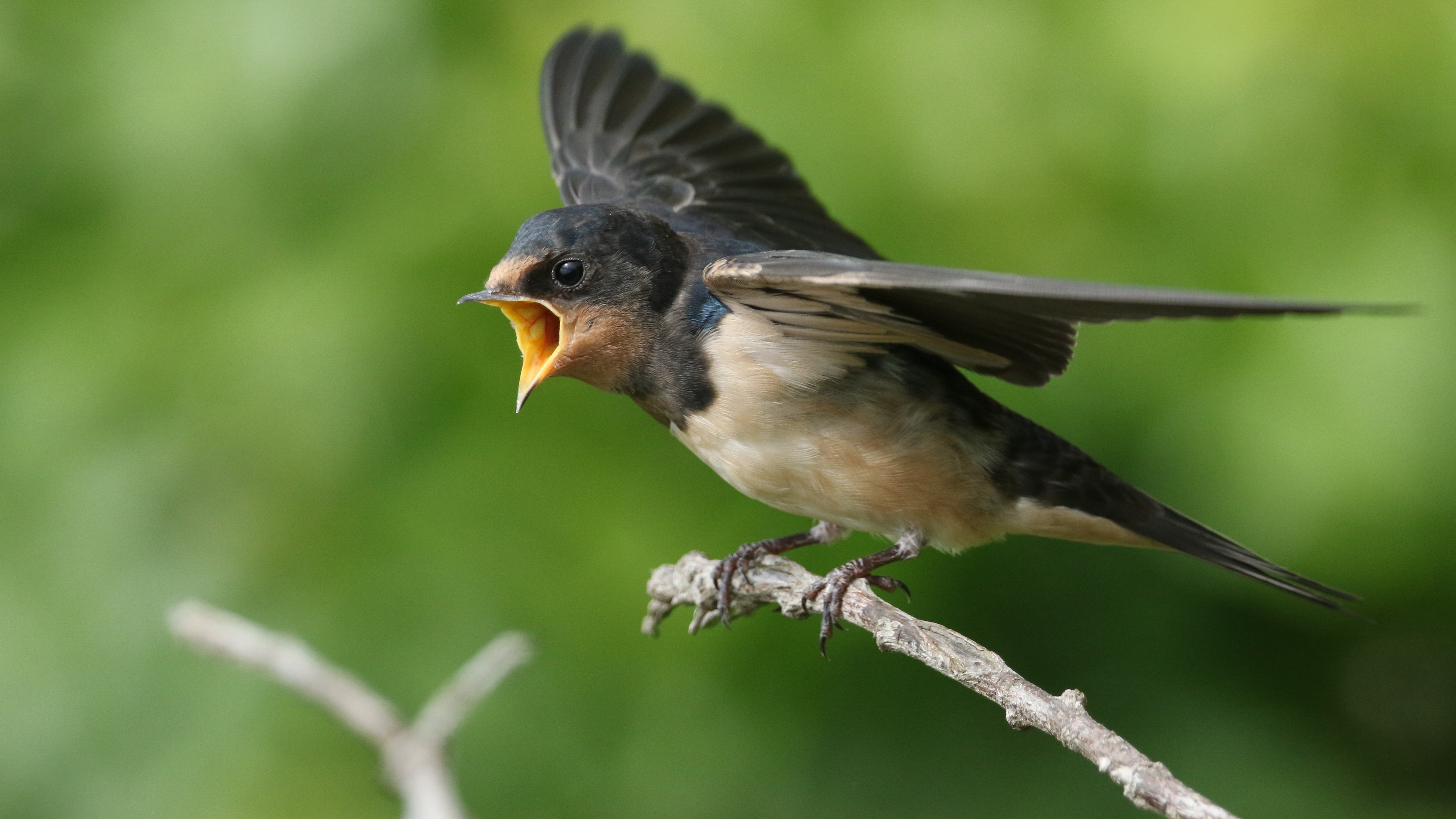
A fledgling swallow screeching for food
After all this cacophony and frenetic movement, mid-summer can seem a bit quiet and still for birdwatchers, but this is something of an illusion. Those fledglings are out there now, enjoying the taste (and experiencing the fear) of freedom, putting their new-found knowledge to the test in order to survive.
Look closely in the hedgerows and trees at this time, and you will observe birds going through a transition as they moult – shedding last year’s feathers and revealing this season’s new clothes. All birds do this, and if they seem shy and a bit secretive about their wardrobe change, that’s simply because they can be very vulnerable to predators as they grow new flight feathers. There is no reason to sing in the middle of summer, either, so they keep quiet and avoid drawing attention to themselves.
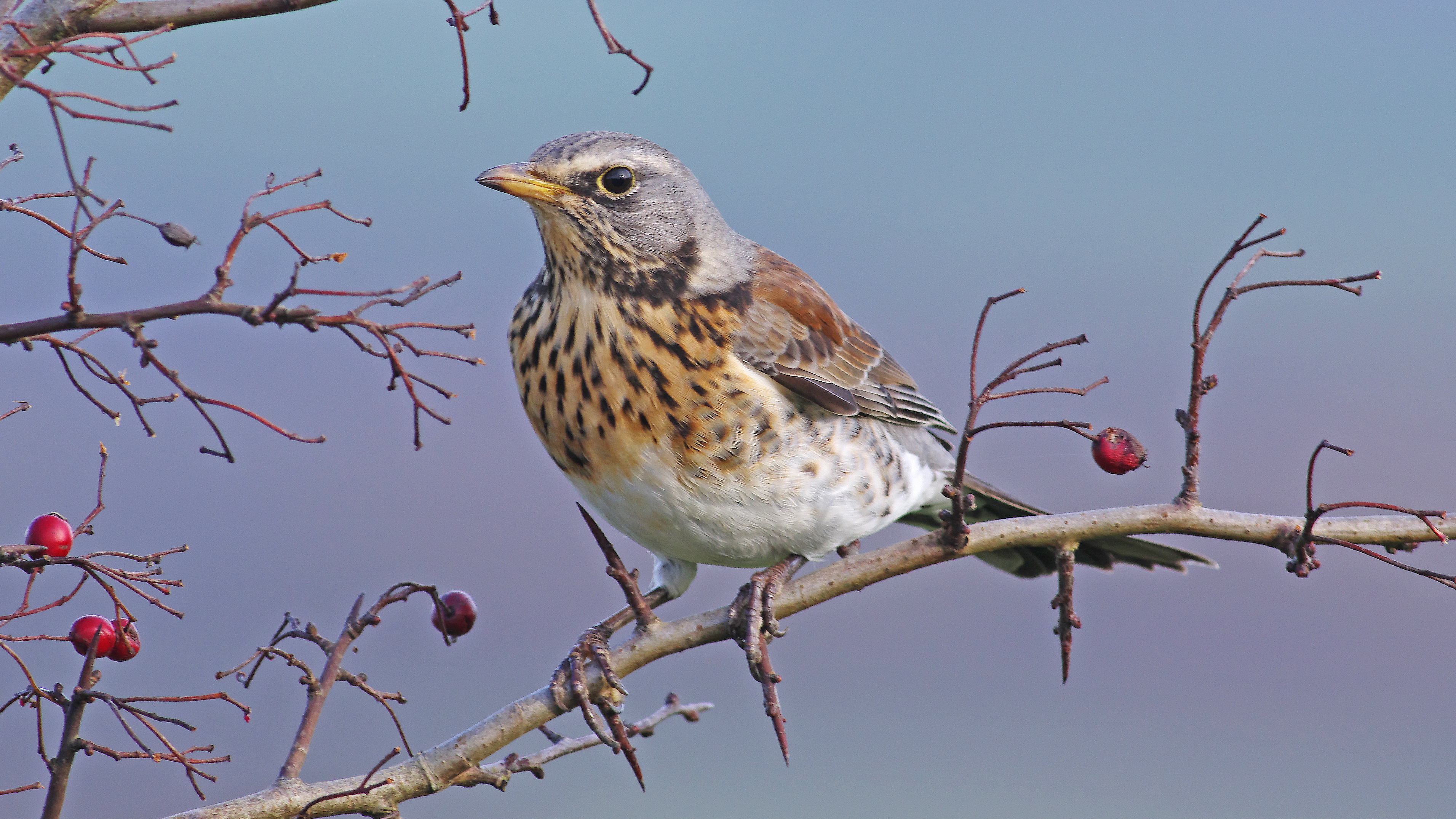
Fieldfare arrive for the colder months
Preparing for fall
Soon the planet spins us into late summer, and with fruits, nuts and berries rapidly ripening on trees, plants and bushes, the migratory species start to gorge, building up strength for their upcoming travels, while the year-round natives begin to plump up in preparation for the long, lean winter months.
Once the days begin to get considerably shorter and the trees change colour, it’s all about scanning the skies again as the sun-seekers head off, and the winter visitors start arriving, among them fieldfare, brambling, waxwing and redwing.
And finally, when the leaves have dropped, and you’re out grasping binoculars in your best gloves, it becomes easier to spot all the hardy species that tough out the coldest months in our backyards and local woods as they flit between the bare branches of the trees, searching for late-season food.

Author of Caving, Canyoning, Coasteering…, a recently released book about all kinds of outdoor adventures around Britain, Pat Kinsella has been writing about outdoor pursuits and adventure sports for two decades. In pursuit of stories he’s canoed Canada’s Yukon River, climbed Mont Blanc and Kilimanjaro, skied and mountain biked across the Norwegian Alps, run ultras across the roof of Mauritius and through the hills of the Himalayas, and set short-lived speed records for trail-running Australia’s highest peaks and New Zealand’s nine Great Walks. A former editor of several Australian magazines he’s a longtime contributor to publications including Sidetracked, Outdoor, National Geographic Traveller, Trail Running, The Great Outdoors, Outdoor Fitness and Adventure Travel, and a regular writer for Lonely Planet (for whom he compiled, edited and co-wrote the Atlas of Adventure, a guide to outdoor pursuits around the globe). He’s authored guides to exploring the coastline and countryside of Devon and Dorset, and recently wrote a book about pub walks. Follow Pat's adventures on Strava and instagram.